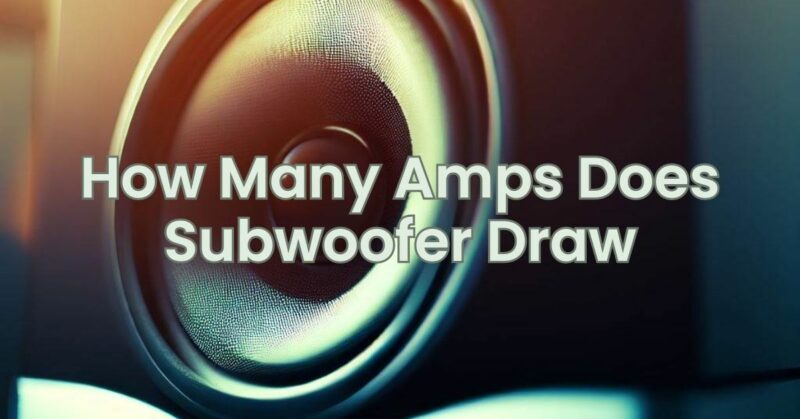Subwoofers are a fundamental component of any audio system, delivering deep, low-frequency bass that adds impact and realism to music and movies. When considering the power requirements of a subwoofer, understanding the current draw is essential. In this article, we will explore the factors that affect the power consumption of a subwoofer and help you understand how many amps a typical subwoofer draws.
Power Rating and Efficiency: Subwoofers are usually rated in terms of their power handling capabilities, often specified as RMS (root mean square) power. The power rating provides an indication of the amount of power the subwoofer can handle and the level of sound output it can produce. However, this rating does not directly correlate to the amount of current the subwoofer draws. The efficiency of the subwoofer, which determines how much electrical power is converted into acoustic output, also plays a significant role.
Wattage and Voltage: To determine the current draw of a subwoofer, it is essential to consider the power equation: Power (in watts) = Voltage (in volts) x Current (in amps). Most subwoofers have a specified power rating in watts, which allows you to calculate the approximate current draw based on the operating voltage of your audio system. For example, if a subwoofer has a power rating of 500 watts and your system operates at 120 volts, the current draw would be approximately 4.17 amps (500W / 120V).
Variable Power Consumption: The power consumption of a subwoofer is not constant and varies depending on the audio content being played. During quiet passages or silent moments, the subwoofer may consume less power, while intense bass-heavy sequences can lead to increased power draw. Additionally, factors such as volume level, equalization settings, and the efficiency of the subwoofer’s amplifier can influence power consumption.
Amplifier Efficiency: The efficiency of the subwoofer’s built-in amplifier also impacts its power consumption. Amplifiers with higher efficiency convert more electrical power into acoustic output, resulting in less wasted energy and lower power draw. Class D amplifiers, known for their high efficiency, are commonly used in subwoofers due to their ability to deliver substantial power while minimizing heat generation.
Influence of Signal Processing: Some subwoofers feature built-in signal processing capabilities, such as digital signal processors (DSP) or equalization adjustments. These features can impact power consumption by altering the electrical signal before it reaches the subwoofer’s amplifier. However, the effect on current draw will vary depending on the specific processing applied and the settings used.
Determining the exact current draw of a subwoofer can be challenging due to various factors such as power rating, amplifier efficiency, signal processing, and operational conditions. While subwoofers are typically rated in watts, understanding the relationship between power, voltage, and current allows you to estimate the approximate current draw. It is important to consider the overall power consumption of your audio system, including other components, to ensure that the power supply can handle the combined load. Additionally, be aware that subwoofer power consumption may vary during different audio content and listening scenarios. By considering these factors and consulting the manufacturer’s specifications, you can gain a better understanding of the current draw of your subwoofer and make informed decisions regarding power supply requirements and system setup.


